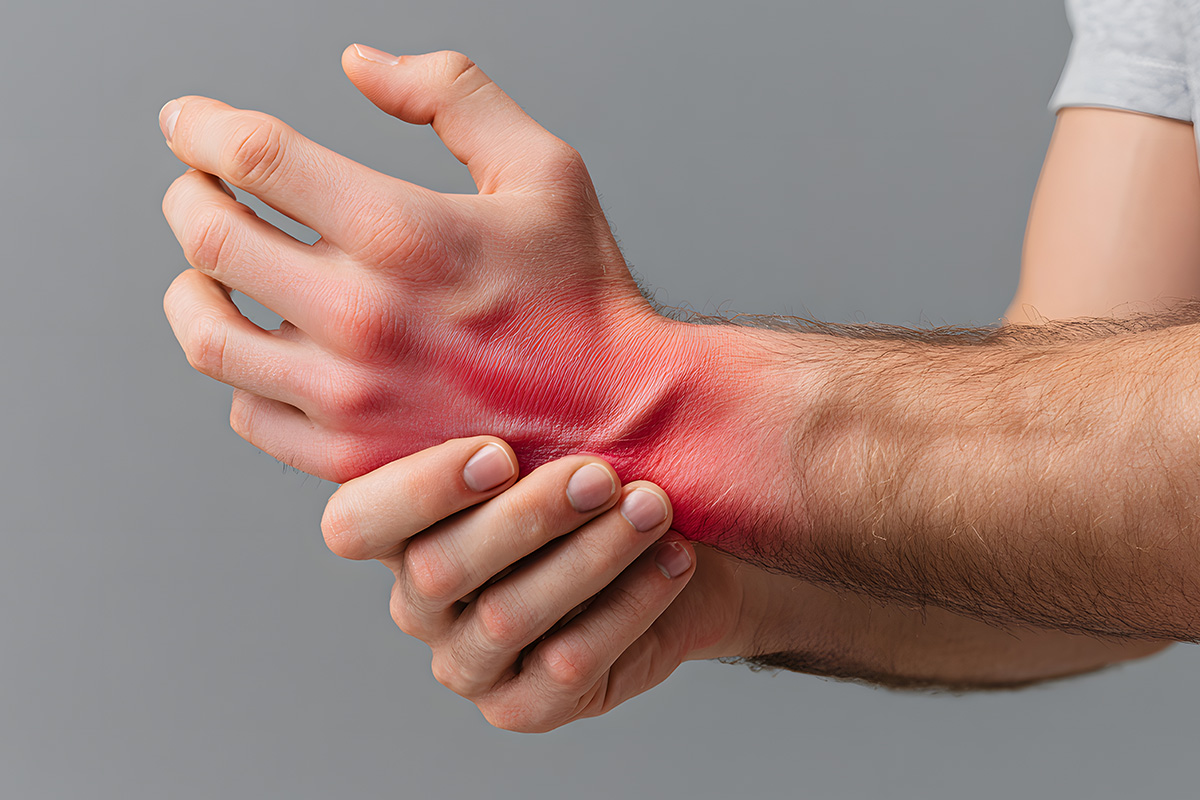Magnetic resonance imaging of the wrist – the most accurate and versatile examination for diagnosing wrist pain and injuries

Magnetic resonance imaging (MRI) of the wrist is a radiation-free and painless examination that provides accurate information about the structure of the bones, joints, tendons, ligaments, and nerves in the wrist. It is by far the most accurate imaging method for determining the cause of wrist pain, injury, or changes in range of motion.
Magnetic resonance imaging is based on a strong magnetic field and radio frequencies – the examination does not involve any X-ray radiation, making it suitable for young patients as well.
When is magnetic resonance imaging of the wrist necessary?
Wrist pain can be caused by tendonitis, ligament damage, hairline fractures, osteoarthritis, or nerve compression, among other things. Magnetic resonance imaging (MRI) of the wrist can accurately locate the source of the problem, which helps in selecting the most effective treatment.
Typical reasons for magnetic resonance imaging of the wrist:
- Recurring or prolonged wrist pain
- Wrist sprain or strain
- Suspected tendon or ligament rupture
- Nerve compression (e.g., carpal tunnel syndrome)
- Swelling or pain that does not show up on X-rays or ultrasound images
- Assessment of osteoarthritis or joint wear
- Sports injury or strain injury in the wrist area
Magnetic resonance imaging (MRI) of the wrist is particularly useful in situations where the symptoms are unclear but the condition affects the use and functioning of the hand.
How to prepare for an MRI scan of your wrist
Magnetic resonance imaging (MRI) of the wrist does not require any special preparation. You can eat and drink normally before the examination. Before the scan, you must remove all metal objects from your hand and wrist area, such as jewelry, watches, and any support bandages.
If you have metal implants in your wrist or elsewhere in your body, please inform us when you make your appointment – we always ensure that the examination is safe on an individual basis.
How is magnetic resonance imaging of the wrist performed?
The examination is performed in a lying position. The hand to be examined is placed in a special support device that keeps the wrist immobile throughout the examination. The device makes a tapping sound during the examination, but earplugs or headphones are available if you wish.
The examination typically takes about 10–15 minutes. It is important to remain completely still in order to obtain accurate and useful images.
Results and follow-up care
After the imaging, a radiologist will analyze the images and prepare a written report. You will receive the results within a few business days. If you wish, we can also send them directly to your treating physician or physical therapist.
An MRI scan of the wrist helps to identify the exact cause of pain and symptoms, enabling the right treatment to be started in good time.
Book an appointment for an MRI scan of the wrist – no referral from a doctor is required.
Visio Magneettikuvaus, Iso Omena, Espoo – Modern equipment and friendly customer service.
